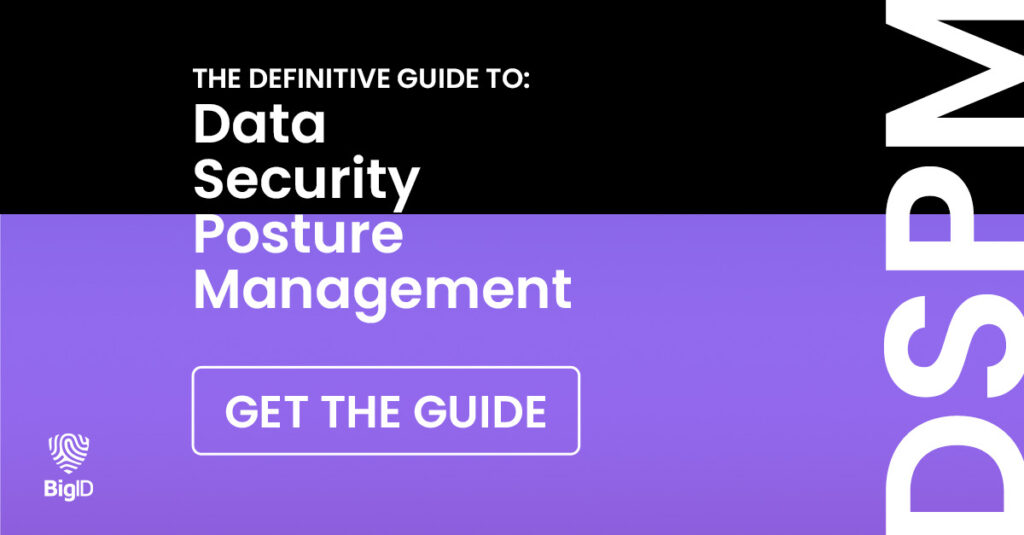Understanding the Scope of Data Risk Management
These days, there’s no business without data. It’s an unavoidable constant for every industry, and so it’s essential that it’s protected. That’s why managing overall data risk has become a top priority for organizations worldwide, and it should be yours too. The fact is that poor data governance or ineffective management policies usually create vulnerabilities that can lead to significant consequences.
The solution? Data risk management. By successfully identifying and assessing potential risks to sensitive data, and mitigating them, you can ensure information remains confidential and that its integrity stays intact.
This is more important than ever, as data breaches and cyber threats are on the rise. As such, implementing comprehensive data risk management strategies is crucial to safeguarding valuable information assets.
What is Data Risk Management?
Data risk management requires both processes and policies, as well as help from technology, which are used to protect sensitive data from unauthorized access, disclosure, alteration, or destruction. First you assess any potential threats to the security of your data , then you implement measures to mitigate these risks.
When people think of data, they often only consider consumer data, but this isn’t the only form that needs protection. Employee data is equally important, or new data collected through evolving digital systems. Data risk management practices help you keep all of this information safe from unauthorized exposure.
Why is Data Risk Management Important?
Managing data risks is an essential activity for any business, as without it you’re likely to have poor or incomplete data and face issues due to human error. Additionally, potential vulnerabilities will probably go unnoticed, leading to breaches.
The consequences of this? Data breaches can result in significant financial losses and legal repercussions for organizations. According to IBM’s Cost of a Data Breach Report 2021, the average cost of a data breach globally was $4.24 million. And that’s without touching on reputational damage, as breaches naturally result in a loss of customer trust and confidence which have a long-term negative business impact.
But don’t despair. With holistic data risk management practices, you can help avoid these calamities by anticipating and mitigating threats using appropriate policies and procedures. This helps you keep your business data secure and compliant with privacy regulations.
Common Data Risk Challenges
So what are the hurdles facing effective data risk management? Usually, they differ depending on your type of organization or industry, but here are some common ones to look out for:
- Lack of Awareness: A lot of businesses undervalue the significance of effective data risk management or are unaware of the full scope of their data exposure.
- Complexity of Data Ecosystems: As data sources and technologies multiply, you may find it difficult to efficiently manage and safeguard your content across a variety of platforms, data centers, and environments.
- Insider Threats: Employees who act maliciously or carelessly can put your data at great risk, so you need strong access management controls and monitoring systems.
- Changing Threat Landscape: As cyber threats continue to evolve, new data risks are introduced, making it difficult for organizations to stay on top of new exposures.
Types of Data Security Risks & Threats
As we’ve mentioned, threats to data can have serious consequences, ranging from financial to reputational, that are well worth avoiding at all costs. To do this, you need to know what to look out for. So, what are the most common threats facing your data?
- External Threats: Cyberattacks such as malware, ransomware, phishing, and DDoS attacks launched by external malicious actors pose a significant risk of data breaches.
- Insider Threats: Not all threats come from outside your business. These come from within, including employees, contractors, or business partners, who (whether intentional or not) compromise data and network security.
- Third-party Risks: Risks associated with outsourcing data processing or storage to third-party vendors or cloud service providers, which may introduce weak points into the organization’s data ecosystem.
Any of these threats can unfortunately lead to data corruption or leakage as well as loss of customer trust and financial implications for your business.
Laws and Frameworks for Data Protection
- General Data Protection Regulation (GDPR): Enforced by the European Union, GDPR mandates strict requirements for the protection of personal data and imposes severe penalties for non-compliance.
- California Consumer Privacy Act (CCPA): Similar to GDPR, CCPA grants California residents rights over their personal information and imposes obligations on businesses handling such data.
- ISO/IEC 27001: A widely recognized international standard for information security management systems (ISMS), providing a framework for establishing, implementing, maintaining, and continually improving information security practices.
Data Risk Management Best Practices
- Assess Security of Data: Regularly assess your organization’s security posture to identify gaps in existing controls with penetration testing, vulnerability scanning, and security audits.
- Implement Access Controls: Enforce the principle of least privilege to restrict access to sensitive data only to authorized individuals and avoid data breaches. Use authentication mechanisms such as multi-factor authentication (MFA) to enhance access security.
- Encrypt Sensitive Data: Implement encryption techniques to protect data both at rest and in transit. Encryption helps safeguard data from unauthorized access even if perimeter defenses are breached.
- Deploy Data Loss Prevention (DLP) Solutions: Use DLP solutions to monitor and prevent unauthorized attempts to transfer data outside your organization’s network perimeter.
- Educate Employees: Train employees on data handling protocols and best practices for securing data and your business network. For example, recognizing phishing attempts, safeguarding passwords, and securely handling sensitive information.
- Conduct Regular Data Backups: Implement regular data backups as a preventive measure against accidental loss or attacks.
Managing Data Risks in the Cloud
With the increasing adoption of cloud computing, organizations are turning to cloud data risk management software solutions to secure their data assets in the cloud and enhance data classification management. These solutions offer features such as encryption, access controls, data loss prevention, and threat detection tailored for cloud environments.
Data Risk Assessments: A Risk Management Framework
Assessing your threats is a critical step in understanding and mitigating potential risks to sensitive and personal data within an organization, particularly regarding types of data risks. Additionally, implementing a structured Risk Management Framework (RMF) helps to ensure data security measures are proactive and consistent. Here’s a structured approach you can follow:
1. Define Scope and Objectives:
- Clearly define the scope of the assessment, including the systems, processes, and data types to be evaluated.
- Establish clear objectives for the assessment, such as identifying threats and weaknesses, assessing the effectiveness of existing controls, and prioritizing risk mitigation efforts.
2. Identify Assets and Data Flows:
- Identify all assets within the organization that store, process, or transmit sensitive data, including your hardware, software, databases, and cloud services.
- Map the data flow across the organization and document how data moves between systems, departments, and external entities.
3. Identify Threats and Vulnerabilities:
- Identify potential threats to the security of your business information, including cyber threats (e.g., malware, phishing), insider threats, physical security risks, and compliance violations.
- Identify flaws and weaknesses in systems, applications, and processes that could be exploited by threat actors to compromise data integrity, confidentiality, or availability.
4. Assess Current Controls:
- Evaluate the effectiveness of existing security controls and safeguards in place to protect sensitive data, such as access controls, encryption, monitoring tools, and incident response procedures.
- Identify gaps or weaknesses in existing controls that may leave you vulnerable to data breaches or other security incidents
5. Analyze Risks:
- Assess the likelihood and potential impact of identified threats exploiting vulnerabilities to compromise sensitive data.
- Use data analytics and assessment methodologies, such as qualitative or quantitative risk analysis, to prioritize risks based on their severity and likelihood.
6. Determine Risk Tolerance:
- Define the organization’s risk tolerance level based on its business objectives, regulatory requirements, and risk appetite.
- Determine acceptable levels of risk for different types of data and business processes, considering factors such as sensitivity, criticality, and legal obligations within the data risk management framework.
7. Develop Risk Treatment Plans:
- Develop risk treatment plans to address identified risks, including risk mitigation, risk transfer, risk avoidance, or risk acceptance strategies.
- Prioritize risk treatment efforts based on the severity and likelihood of risks, available resources, and organizational priorities.
8. Implement Controls and Monitoring:
- Implement recommended controls and mitigation measures to reduce the likelihood and impact of identified risks.
- Establish mechanisms for monitoring and evaluating the effectiveness of implemented controls over time, adjusting strategies as needed based on changing threats to data compliance.
9. Document and Communicate Findings:
- Document the results of the risk assessment, including identified risks, recommended controls, and risk treatment plans.
- Communicate findings to relevant stakeholders, including senior management, IT teams, data owners, and regulatory authorities as required.
10. Review and Update Regularly:
- Regularly review and update the risk assessment process to reflect changes in the organization’s environment, technology landscape, and regulatory requirements.
- Conduct periodic reassessments to ensure ongoing effectiveness of controls and alignment with business objectives, focusing on potential data risks.
The Impact of AI on Data Risk Management
The rapid adoption of artificial intelligence (AI) has revolutionized data risk management by enabling organizations to enhance threat detection, automate security processes, and analyze vast amounts of data for anomalies and patterns indicative of potential risks. AI-powered solutions can augment human capabilities, providing real-time insights into emerging threats and helping organizations stay one step ahead of cyber adversaries through strong data risk management.
Reducing and Mitigating Risks to Data with BigID’s Strong Data Risk Management
BigID is the industry leading platform for data privacy, security, compliance, and AI data management, leveraging advanced AI and machine learning to give businesses the visibility into their data they need.
With BigID you can:
- Know Your Data: Automatically classify, categorize, tag, and label sensitive data with unmatched accuracy, granularity, and scale.
- Improve Data Security Posture: Proactively prioritize and target risks, expedite SecOps, and automate DSPM.
- Reduce Your Attack Surface: Shrink the attack surface by proactively eliminating unnecessary, non-business-critical sensitive information.
- Remediate Data Your Way: Centrally manage data remediation – delegate to stakeholders, open tickets, or make API calls across your stack.
- Enable Zero Trust: Reduce overprivileged access & overexposed data, and streamline operations.
Be proactive with your data security approach— get a 1:1 demo with our experts today.



